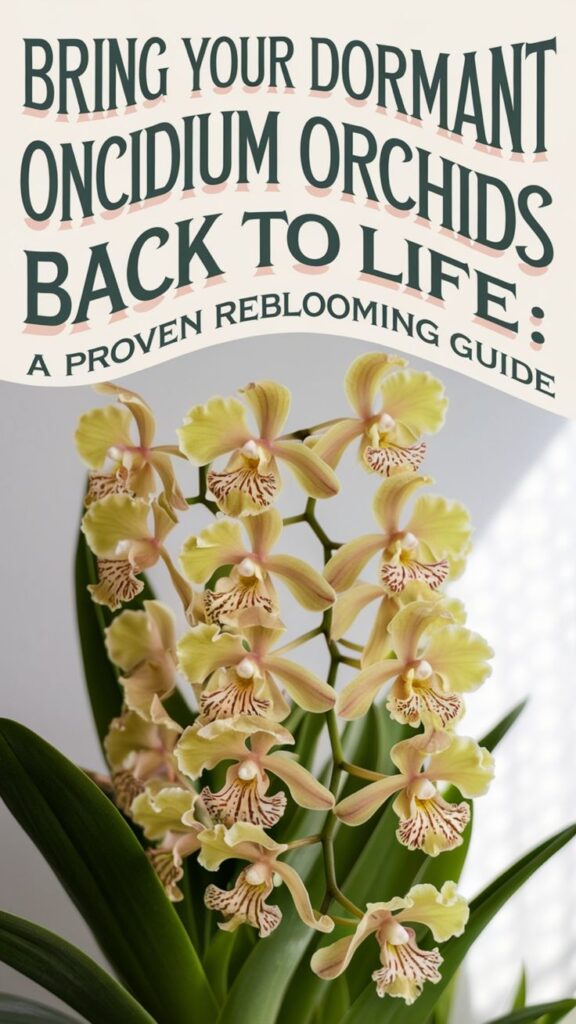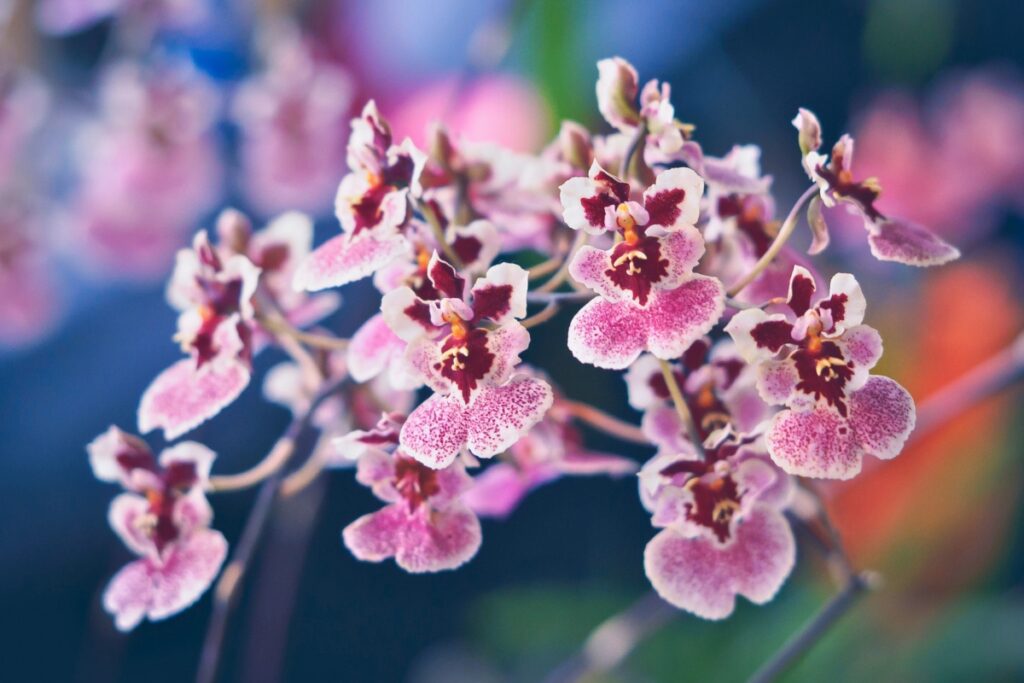Just like coaxing a shy friend to join the party, getting your Oncidium orchid to rebloom requires the perfect mix of encouragement and patience. You’ll need to understand your plant’s unique growth cycle and provide specific conditions that mirror its natural habitat. While Oncidiums aren’t the most demanding orchids in the family, they do have some non-negotiable requirements that’ll make the difference between a thriving bloomer and a stubborn green stick.

Contents
Understanding the Natural Bloom Cycle
Before you can successfully encourage your Oncidium orchid to rebloom, you’ll need to understand its natural flowering pattern. In their native habitat, these orchids typically bloom once or twice per year, with each flowering period lasting 3-4 weeks.
Most Oncidium varieties produce their flower spikes during the fall or spring, responding to seasonal changes in temperature and daylight. You’ll notice new pseudobulbs developing first, followed by flower spike emergence about 2-3 months later.
The entire blooming cycle, from spike formation to flower drop, takes approximately 4 months. During this time, your orchid will focus its energy on flower production rather than vegetative growth.

Optimal Light and Temperature Requirements
Since Oncidium orchids evolved in tropical and subtropical regions, they thrive in bright, indirect light and moderate temperatures. Place your orchid near an east or south-facing window, where it’ll receive 4-6 hours of filtered sunlight daily. If you can’t provide natural light, use LED grow lights positioned 12-18 inches above the plant.
These orchids prefer daytime temperatures between 75-85°F (24-29°C) and nighttime temperatures around 65-70°F (18-21°C). You’ll need to maintain a 10-15°F temperature drop at night to trigger blooming. In winter, don’t let temperatures fall below 55°F (13°C), as cold damage can prevent reblooming.
Water and Humidity Management
Properly managing water and humidity levels will make or break your Oncidium orchid’s reblooming success. Water thoroughly when the potting medium feels dry about 1 inch below the surface, typically every 5-7 days in warm weather and 7-10 days in cooler months.
Maintain humidity between 40-60% by using a humidity tray filled with pebbles and water. Don’t let the pot sit directly in water, as this can lead to root rot. During winter months, when indoor heating reduces humidity, you’ll need to mist your orchid’s aerial roots daily.
Remember to water early in the day so leaves can dry before nightfall, preventing fungal issues.
Fertilizing for Successful Reblooming
Along with proper watering, regular fertilization provides Oncidium orchids with the nutrients they need to produce vibrant blooms.
Feed your orchids with a balanced 20-20-20 water-soluble fertilizer every two weeks during the growing season. During winter’s rest period, reduce fertilizing to once monthly. You’ll want to mix the fertilizer at quarter-strength, using about ¼ teaspoon per gallon of water.
Remember to “fertilize weekly, weakly” – it’s better to under-fertilize than over-fertilize. Always apply fertilizer to moist roots, never dry ones, and flush the growing medium with plain water monthly to prevent salt buildup.
Pruning and Post-Bloom Care
When your Oncidium orchid’s blooms begin to fade and wither, it’s time for strategic pruning to encourage future flowering. Cut each spent flower spike 1/2 inch above the nearest node using sterilized pruning shears.
If the flower spike has turned brown or yellow, remove it completely at the base. Don’t cut into the pseudobulbs, as they store nutrients for future growth. After pruning, reduce watering by 25% for two weeks.
Remove any dead or yellowing leaves, and clean the remaining foliage with a damp cloth to prevent pest problems. Your orchid will now focus its energy on developing new growth for the next blooming cycle.
